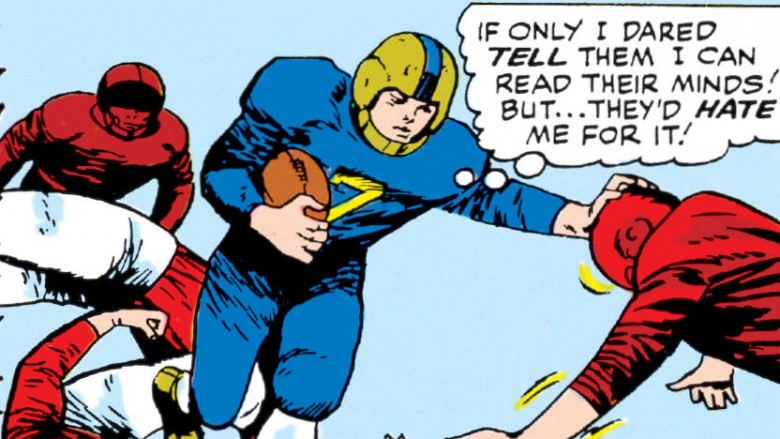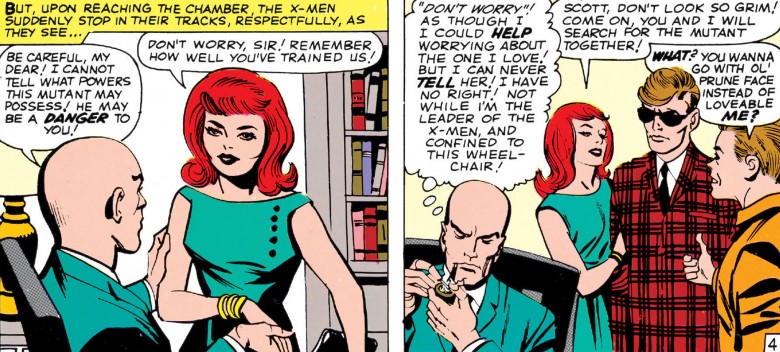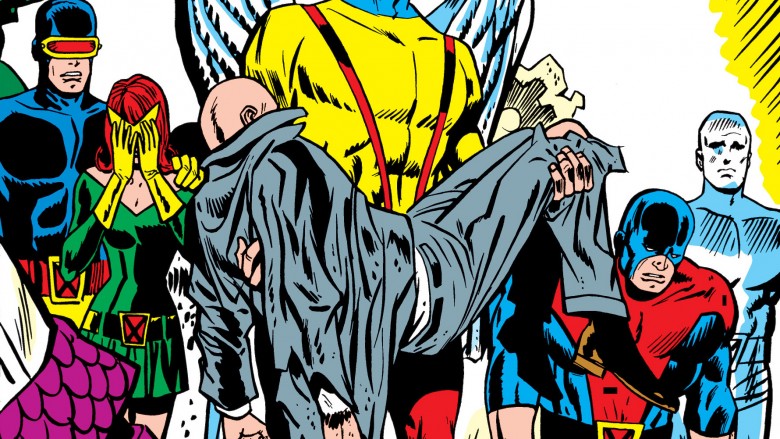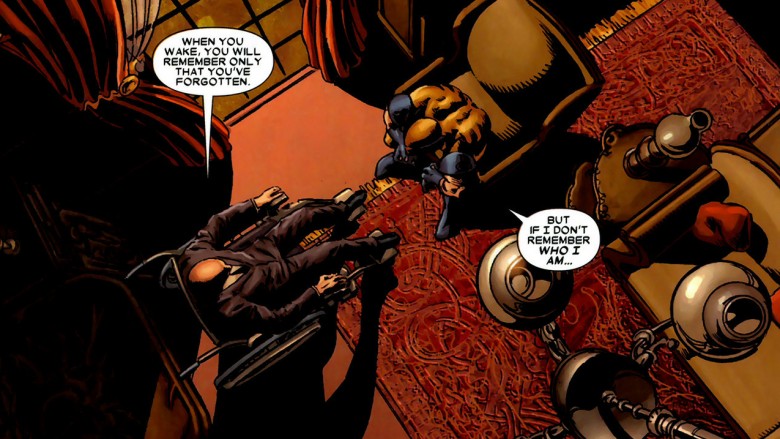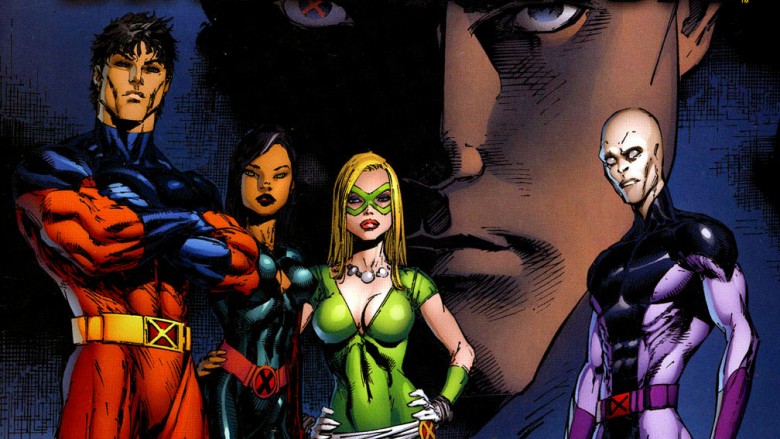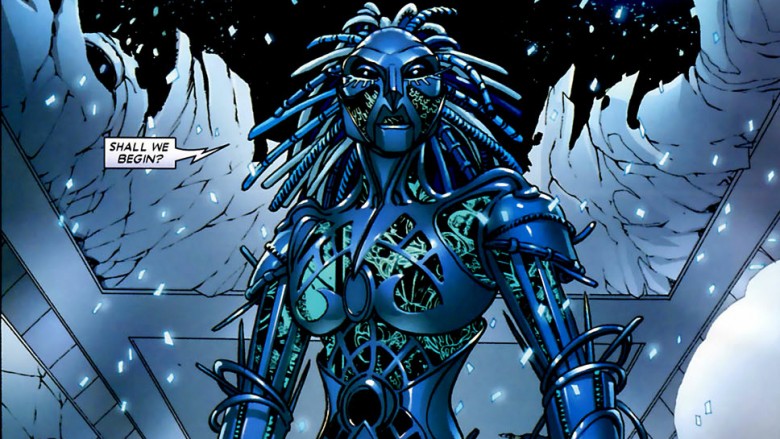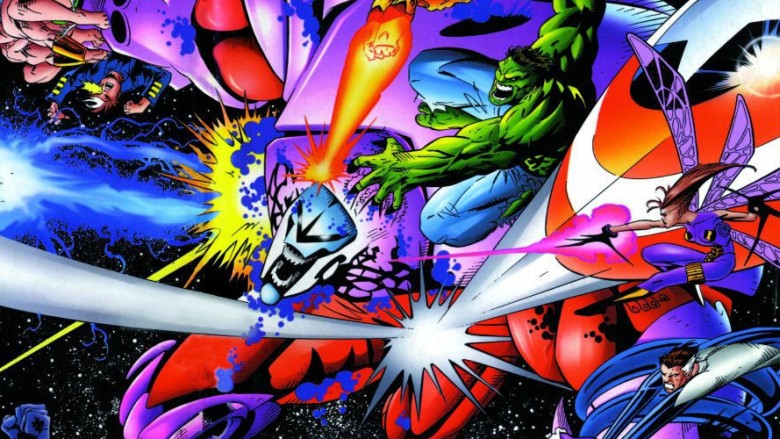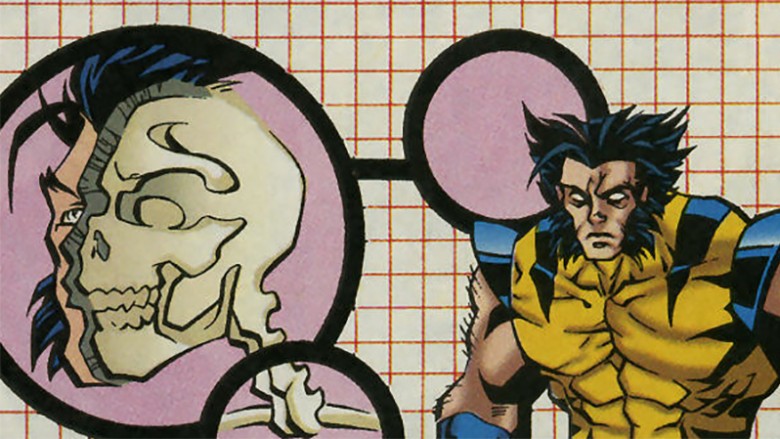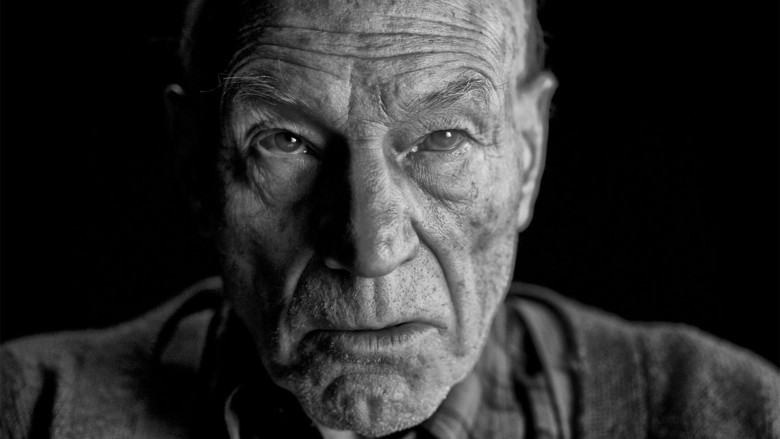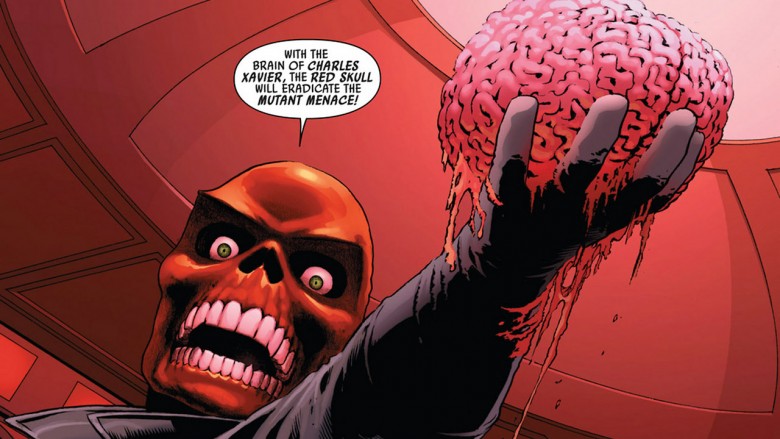The Most Terrible Things Professor X Has Ever Done
Oh, Kitty. "Jerk" is an understatement.
Sure, a jerk might bully his stepbrother, or cheat and lie to get ahead. Professor X does that. And yeah, a jerk might skip out on his kid (in this case, Legion lead David Haller). Professor X did that, too. But psychologically abusing students, or erasing people's memories—and, sometimes, their entire personalities—and enslaving alien species, and committing multiple mass murders?
Those aren't the actions of a mere jerk. Those are the actions of a fully-fledged supervillain. For all of Xavier's talk about peace and love and harmony, he's the most unscrupulous, hypocritical, and manipulative of all the X-Men. Face it, folks, Magneto was right: Professor X is downright dangerous, and nothing—not even death—can stop him.
He used his powers to cheat at school
You'd think that a man who runs a school—even one where the curriculum threatens to kill the students—would have some respect for the education system. You'd think, but you'd be wrong. When Professor X was just regular old Charles Xavier, he scammed his way through high school by using his psychic powers to cheat on exams and dominate opponents on the sports field.
He wasn't even subtle. In class, Charles read his teachers' minds and answered questions with knowledge he couldn't possibly have yet, and became the star quarterback—and, thus, the most popular kid in school—by psychically stealing plays from the opposing team. He wasn't remorseful, either. At home, Charles devoted an entire shelf to the trophies he didn't really earn, and only retired from athletic competition because "it's too easy for a mutant to defeat a normal human." In other words, the cheating didn't bother him. He just got bored.
When Charles' half-brother Cain Marko saw through the charade, he went mad with jealousy, forcing Chuck to put him down with a karate chop. Later, Professor X tried to convince his students that Cain was the villain in this story (to be fair, Marko tried to kill Charles a few times, which complicates things), but here's all you need to know: after Charles' stepfather died, he inherited the family mansion and all the money, while Cain transformed into Juggernaut and worked as a hired gun. We're not outright saying that Charles is the bad guy here, but you have the evidence. We're pretty sure you'll reach the right conclusion.
He perved on his teenage student
The mutant known as Jean Grey has had many, many suitors. There's Warren Worthington, also known as the Angel, who eloquently welcomes Jean to Xavier's School for Gifted Youngsters by exclaiming, "A redhead! Look at that face... and the rest of her!" and promptly spending the next few dozen issues trying to talk her into a date. There's Scott Summers, who'd end up marrying both Jean and her evil, demonic clone. There's Wolverine, who carried a torch for Jean for ages (and even wins her heart in a couple of alternate universes). And there's the creepy bald mentor who serves as both Jean's teacher and her surrogate father figure, and lusts after Jean in secret for years.
Even putting the age difference aside—remember, Jean is very much a teen when she arrives at Xavier's, while Professor X is a decorated veteran of the Korean War—the teacher-student relationship is more than enough to make Xavier's crush on his young charge super-icky.
Thankfully, aside from a single panel in X-Men #3 (in which Professor X laments that the only thing keeping him and Jean apart is his disability—and not how completely inappropriate his feelings are), the issue only comes up once. In the '90s, When Professor X's darkest thoughts manifested themselves as an alternate personality called Onslaught, Xavier's crush on Jean makes a surprise re-appearance, validating the long-abandoned plotline and making it clear that Xavier's had a thing for Jean for years. It's unsettling at best, and makes a lot of those early X-Men comics—in which Jean is clearly the Professor's favorite student—a whole heck of a lot creepier.
He faked his own death and didn't tell his students
Professor X never beat his students—the supervillains did that—but he's certainly not above using psychological abuse in order to teach his young wards a lesson. In X-Men #4, Xavier "loses" his powers, only to reveal an issue later that—surprise!—he was faking in order to give the X-Men pop quiz (and also, maybe, get them killed by the Brotherhood of Evil Mutants). That's pretty bad, but in X-Men #42, it gets even worse. In a battle with a creature called Grotesk the Sub-Human, an explosion takes Xavier's life, and the X-Men spend the next two years mourning. And yet, in X-Men #65, Xavier smugly rolls back into their lives, alive and perfectly healthy.
As it turns out, he'd swapped places with a shape-shifting mutant called the Changeling, who was diagnosed with a terminal illness and wanted to use his last few months on Earth to make a difference. While Changeling led the X-Men, Xavier locked himself in a basement and devised a plan to defeat an impending alien invasion. When Changeling fell during battle, Professor X decided to let them grieve instead of letting them in on the gag (aside from Jean Grey, of course, who the Professor told because she's his favorite).
Naturally, the X-Men are traumatized by Xavier's sudden return—"Now I know how Hamlet felt when he saw his father's ghost," Beast says—but Xavier doesn't apologize. Instead, he puts the X-Men straight to work, submitting them to a brutal training regimen and screaming at them when they make mistakes. Honestly? Marvel's band of merry mutants probably would've been better off if Xavier had died—or at least stayed in the basement and let them get on with their lives.
He manipulated Wolverine's mind and turned him into a weapon
Thanks to his time as a Weapon X research subject, Wolverine is all kinds of messed up. He can't remember his past or where he came from, and many of the memories he does have—like, say, the time that Sabertooth murdered his girlfriend, Silver Fox—are fake. In addition, the Weapon X scientists subjected Wolverine to an intense and extended brainwashing session, transforming the mutant into an obedient and deadly assassin.
So what does Professor X, mutantkind's benevolent champion of peace and understanding, do when the broken creature known as Wolverine comes calling? Why, brainwash him again, of course. In Wolverine Origins #29, Logan learns he was originally sent to the X-Mansion to kill Professor Xavier, not help him. With his powers, however, Xavier learned about the plan and let Wolverine join the X-Men anyway. Why? Because, as Professor X explains, he needed a weapon for his peaceful, diplomatic mission to unite humans and mutants.
Anyway, instead of rehabilitating Wolverine the old-fashioned way—you know, with love and support and understanding—Xavier decides to jump in and mess around with Wolverine's mind some more. Xavier removes a bunch of Logan's memories, which will ultimately cause poor Wolverine years of angst, while making sure that the assassin will stay loyal to the X-Men—permanently.
He got a whole team of X-Men killed, replaced them without telling anybody, and erased Cyclops' memory of his long-lost brother
In Giant-Size X-Men #1, Professor X recruits a brand new group of X-Men—including mainstays like Wolverine, Nightcrawler, Storm, and Colossus—to rescue his original band of mutants from Krakoa the Living Island, rebooting the struggling X-Men series in the process. However, as the X-Men learn in Deadly Genesis, the classic X-Men line-up is actually the B-squad. Before Cyclops led the new group of X-Men to victory, Xavier deployed an entirely different group of superheroes to rescue his former students—and then erased everyone's memory of the team when they died.
Unfortunately for Xavier, one of those mutants actually survived and called him out: Gabriel, a mutant with the code-name Vulcan who also happens to be Scott (Cyclops) and Alex (Havok) Summers' younger brother. After the mission to Krakoa goes south, Cyclops is understandably distraught by Vulcan's supposed death, and Xavier deletes all of Scott's memories of his brother in order to keep him calm.
That doesn't work out so well when Vulcan returns from space, where he'd been stuck in a coma, seeking revenge. In his quest for vengeance, Vulcan kills Banshee—another one of the mutants Xavier recruited in Giant-Size X-Men #1—and a few others, and tells Cyclops and Havok the truth, turning them against Xavier. Together, the X-Men stop Vulcan, but it's not as easy to repair the broken bond between Cyclops and Xavier, and Scott banishes a now-powerless Xavier from the X-Mansion, claiming that Professor X is no longer a mutant nor a member of the X-Men.
He enslaved a sentient artificial intelligence
In the beginning, the X-Mansion's Danger Room was just a high-tech obstacle course that was designed to test Xavier's students. However, after the X-Man Colossus destroyed the training ground (don't worry, he was possessed), Professor X and the mutant Forge upgraded the Danger Room using alien Shi'ar technology. The end result was a holodeck-like playground that could replicate any environment and simulate any challenge. Unfortunately, it also happened to be alive.
Professor X knew this—the room actually reached out to him and asked for help—but decided to let his students train there anyway, essentially transforming the Danger Room into a slave. The other X-Men had no idea until the Danger Room started possessing other machines in the X-Mansion, convinced a young student to commit suicide, and eventually built itself a body to take revenge on Professor X. Calling itself Danger, the Danger Room trapped the X-Men in a simulation (after spending so much time "fighting" them during training exercises, Danger knew exactly how to stop every member of the team) and then went hunting for her jailor.
Eventually, Kitty Pryde talked Danger down, and she eventually became one of the X-Men's allies, although not before getting into a few more scraps with Xavier and his mutant charges. And who could blame her, really? She spent years serving as a glorified gymnasium for a bunch of teenagers. Even if Danger hadn't been imprisoned against her will, the B.O. would've been enough to drive her absolutely mad.
He killed half the heroes in the Marvel Universe
One could argue that the whole Onslaught saga isn't entirely Charles Xavier's fault—whether or not a psychic is responsible when his brain creates a "sentient psionic entity" with its own thoughts and personality isn't covered by any legal precedent that we're aware of—but the events leading up to whole disaster? That's all on Charles. In X-Men #25, Magneto rips the adamantium off of Wolverine's bones, and in response, Professor X scrambles Magneto's brain, putting him in a coma (which isn't exactly the same as killing him, but c'mon—it's pretty close).
Anyway, in the process, a piece of Magneto's mind invades Xavier's, where it mixes with Xavier's darkest thoughts and emerges as a fully realized creature. Using Professor X's psychic powers to build a surrogate body, Onslaught kidnaps the Professor and tricks Franklin Richards, a powerful mutant, into helping him conquer the world. The X-Men, the Fantastic Four, and the Avengers battle Onslaught and his army of Sentinels in Central Park, reducing Onslaught to a shapeless mass of uncontrollable energy. Ultimately, the Avengers and the Fantastic Four give their lives to stop Onslaught (sort of, anyway—they actually just move to an alternate dimension with a brand new continuity), leaving only a handful of heroes—the X-Men, Spider-Man, and a few others—to keep Earth safe.
On one hand, Professor X super-brain powered Onslaught. On the other, Onslaught is clearly a separate person (or at least a person-like thing). Either way, however, none of this would've happened if Xavier hadn't decided to play God with Magneto, and for that, we're pretty confident putting Onslaught's massacre on Charles himself.
He created detailed plans for defeating his students
When Batman created a series of plans describing how to kill his Justice League teammates, it didn't work out so well. When Professor X created a series of plans describing how to kill his students (most of whom love him like a father), it went even worse. In Excalibur #100, after Onslaught takes over Professor X's mind, the X-Men visit Moira MacTaggert's research lab to retrieve the Xavier Protocols, which describes in extreme detail exactly how to take the X-Men—including Charles himself—out for good.
Need to get rid of Wolverine? Simply sever his head and remove it "utterly from the proximity of his body to prevent swift flesh and nerve regrowth." Got a problem with Cable? Just exacerbate the techno-virus that's slowly consuming his body, allowing the disease to ravage his brain and body. A simple helmet will stop Cyclops' eye-beams, while a suit of anti-psionic armor will topple Professor X himself.
As Jean Grey observes, that's pretty messed up—as she sobs, "Every night, when Charles went to his study to work, he was thinking of ways to kill the X-Men"—and if you guessed that this story doesn't have a happy ending, well, congratulations: you've read an X-Men comic before. In X-Men #65, a human-Sentinel hybrid named Bastion uses the Xavier Protocols to defeat the team. In X-Men #84, Professor X's mutant-tracking computer Cerebro comes to life and uses the Protocols against the X-Men when they try to stop him from taking over humanity. In both cases, the X-Men prevail, but it's difficult—and yet, not as hard as forgiving Charles for his lack of trust.
He destroyed the X-Men
Professor X isn't quite as bad in the movies as he is in the comics, thanks largely to Patrick Stewart's calm, kind performance (James McAvoy's Xavier is a little rougher around the edges, but he mostly only hurts himself). That streak ends in Logan. While pretty much everything bad that happens in the movie is Professor X's fault (that poor family with the horses would've been fine if Xavier hadn't insisted on enjoying a home-cooked meal and sleeping in a real bed), his worst deed—killing seven X-Men and destroying the team—isn't featured onscreen at all.
Throughout the film, Professor X is plagued by seizures that drive his psychic abilities into overdrive. At one point, Xavier runs low on medication, and the resulting psychic shockwave almost destroys Logan, Caliban, and their Mexican shack. At another, Xavier lashes out at a group of soldiers, nearly murdering everyone inside a Las Vegas casino. Throughout the movie, characters mention a mysterious "Westchester incident," in which a similar event ended in unnamed tragedy.
Director James Mangold decided not to show what happened in Westchester onscreen, but it's not hard to read between the lines. Westchester County in upstate New York is where the X-Mansion is located. During the film, the villainous Donald Pierce notes that Professor X's brain has been officially classified as a weapon of mass destruction by the United States government. Professor X is plagued by guilt throughout the film, and aside from Logan, the rest of the X-Men are nowhere to be found.
Further, Mangold pretty much spelled out exactly what happened in Westchester in a recent interview. At one point, the Westchester Incident was actually Logan's first scene, but Mangold thought that opening the film with it "suddenly made the movie about X-Men dying," and not Logan's journey. That's pretty unambiguous. We may not know the specifics, but Professor X definitely killed his students. End of story.
The Red Skull used his brain to take over the world
After Cyclops killed Professor X at the end of Avengers vs. X-Men, most people assumed Xavier's reign of terror was over. They were wrong. In Uncanny Avengers #1, the Red Skull steals Professor X's brain and uses its psychic powers to try and wipe out mutantkind for good.
It almost works, too. Using Xavier's powers, the Red Skull brainwashes the Scarlet Witch, who drove mutants to the brink of extinction in House of M, and tries to get her to try again. Next, he incites an anti-mutant mob in Manhattan, and manipulates Thor into turning against his teammates. Captain America stops the Red Skull, but the villain escapes. Later, the Red Skull transforms himself into Red Onslaught and uses Professor X's powers to start "World War Hate"—and when the Avengers and the X-Men try to use a spell to bring out Xavier's better nature, they inadvertently turn all of the heroes into villains and all the villains into heroes, kicking off the line-spanning Marvel's AXIS event.
That's Chuck for you. Dead for years, and yet he's still up to no good.

